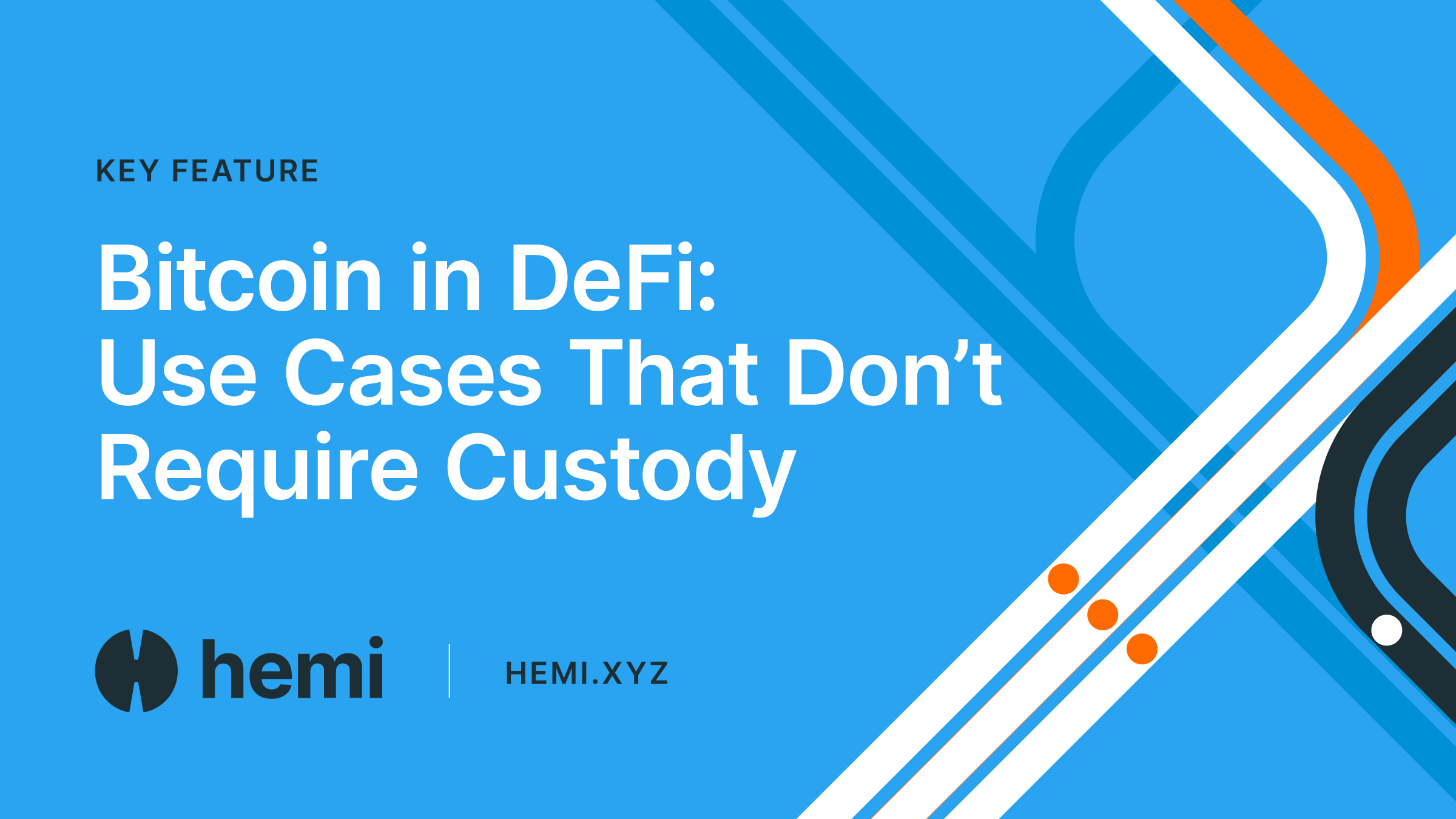- Bitcoin
- Ethereum
- Hemi
- Learn Center
- July 3, 2025
Bitcoin in DeFi: Use Cases That Don’t Require Custody

Bitcoin has long been seen as a store of value, a hedge against inflation, and a decentralized form of money. But in recent years, interest in Bitcoin’s role in decentralized finance has grown. DeFi, or decentralized finance, is usually associated with Ethereum, where smart contracts power lending, trading, and staking. That has led many to ask whether Bitcoin can participate in DeFi without giving up self-custody.
Most Bitcoin holders prefer to control their own assets. That is one of the main values of the Bitcoin network. But using Bitcoin in DeFi has traditionally required users to send their coins to custodial platforms or wrap them through Ethereum-based bridges. These approaches rely on third parties to hold the original Bitcoin and issue synthetic versions on other chains. While this opens access to DeFi, it also introduces risks, including smart contract exploits, custodial failures, and loss of direct control over funds.
Now, new tools and protocols are emerging that let Bitcoin participate in DeFi without giving up custody. These solutions allow users to access lending, trading, and yield opportunities while keeping their Bitcoin under their own control or in trust-minimized systems. They focus on preserving Bitcoin’s security model while expanding its functionality.
One of the simplest non-custodial use cases is trust-minimized collateral. Users can lock Bitcoin in a contract or multi-signature wallet and borrow stablecoins or other assets without handing over their private keys. This can be done using time-locked contracts, threshold signatures, or atomic swap logic that ensures both parties follow the rules without needing an intermediary. These models have been tested and refined to allow decentralized collateralization without full asset transfer.
Another important use case is Bitcoin-backed liquidity. In this model, Bitcoin holders can provide liquidity to a decentralized trading platform or automated market maker without wrapping their coins or sending them to another chain. These platforms use Layer 2 settlement, sidechains, or cross-chain tunnels to confirm balances and match trades, while the underlying Bitcoin remains secure in its native environment. This reduces risk and avoids the need to trust custodians.
Yield strategies are also becoming available to native Bitcoin holders. Instead of depositing wrapped Bitcoin into an Ethereum contract, users can deposit real Bitcoin into a non-custodial vault or protocol that generates returns from decentralized activities like market making or secured lending. The returns are calculated and distributed based on cryptographic proofs or consensus checkpoints, so users can verify activity without giving up ownership of their coins.
Hemi is helping to enable these types of non-custodial Bitcoin use cases. Through its Proof-of-Proof system and cross-chain tunnels, Hemi allows Bitcoin to serve as collateral, liquidity, or settlement without needing to leave the Bitcoin network. It connects Bitcoin to Ethereum and other smart contract ecosystems while maintaining control and transparency. This opens the door to DeFi applications that use real Bitcoin, not synthetic versions, and that operate with a higher standard of trust and resilience.
As more developers build on Layer 2 systems like Hemi, the Bitcoin DeFi landscape will continue to grow. Users will be able to interact with decentralized protocols, earn yield, and access credit while maintaining the core principle of self-custody. This makes Bitcoin more useful without compromising what makes it different.
The future of Bitcoin in DeFi does not depend on giving up control. It depends on building tools that respect its design and extend its utility. With the right infrastructure, Bitcoin can become a central part of the decentralized financial system without losing its identity.